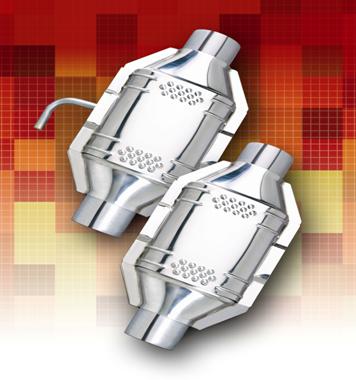

|
CATALYTIC TEMPERATURE SENSOR |
|
CUMMINS II |


|
PROJECT |
|
PROJECT SCOPE
The purpose of this project is to design a sensor or system capable of measuring the temperature of the catalyst bed behind a running diesel engine. The internal temperature of this soot filter is to be determined. The filter is a low thermal conductivity material known as cordierite, which is loaded with soot from the engine. Exhaust reacting with this soot can cause an exothermic reaction, generating a large amount of heat. This reaction must be limited to a level that does not induce large thermal stresses in the catalyst resulting in thermal fatigue cracks. Accurate temperature measurements of the surface of the filter are critical in handling this engine control system.
Catalytic Converters
PRODUCT SPECIFICATIONS
Temperature Range The device must be able to withstand temperatures up to 1000°C. At 1400°C, the substrate begins to melt, so the engine should never reach that temperature. The target range for the catalyst’s temperature will ideally remain between 400°C-700°C. Therefore, the device must be most accurate in this range, most importantly between temperatures of 500°C-600°C.
Output An output that the onboard electronic control module can read is essential in regulating O2 and HC supplies accordingly, keeping temperatures in the target range.
Dynamic Response A quick dynamic response is necessary because efficiency of both the engine and catalytic converter rely on regulations of the fuel and air entering the engine to keep temperatures in their target range.
Durability The sensor must be robust enough to last a minimum of 188,000 miles and cheap enough to be incorporated into production at volumes in excess of 250,000 units per year. The device must be able to withstand average truck operation, specifically heat and vibration.
Location The location of the device does not have to be on the surface of the catalyst and can be measured from any point in or around the filter. However, the chosen location must correlate with the surface temperature of the brick itself. Knowledge of the temperature distribution is known and an algorithm can be used to determine maximum temperature if measurements can be taken at the inlet and outlet. |


